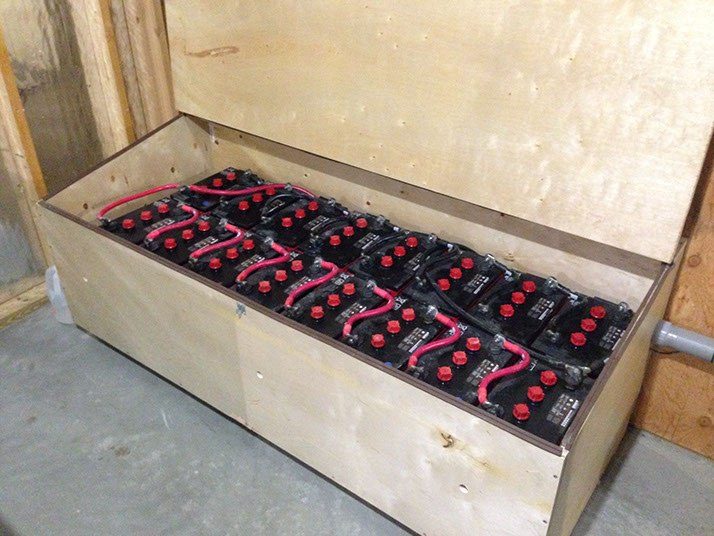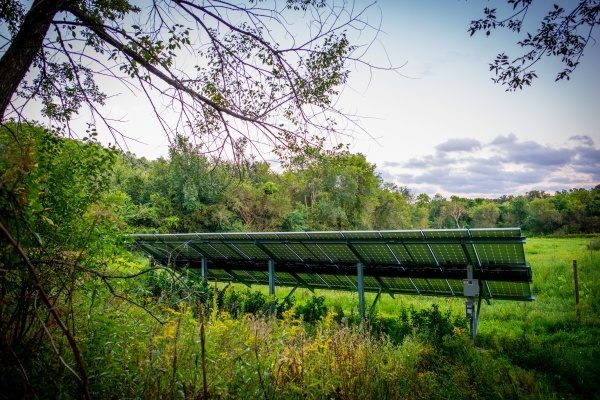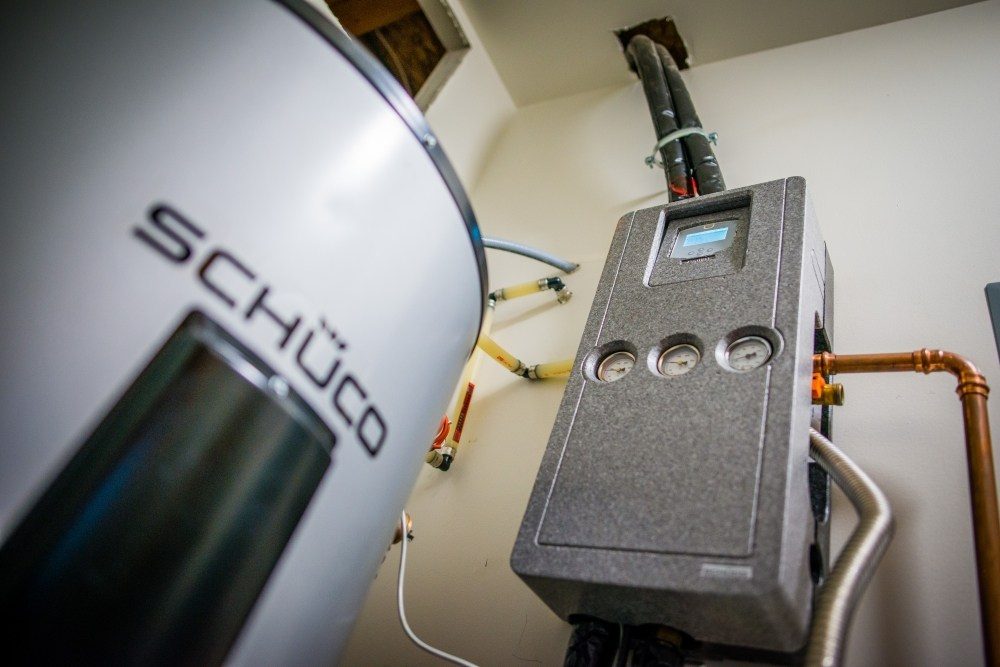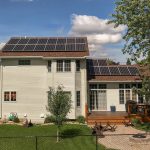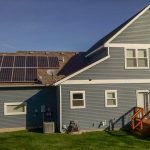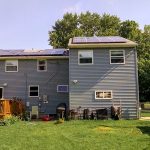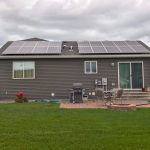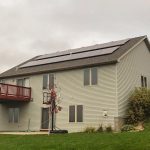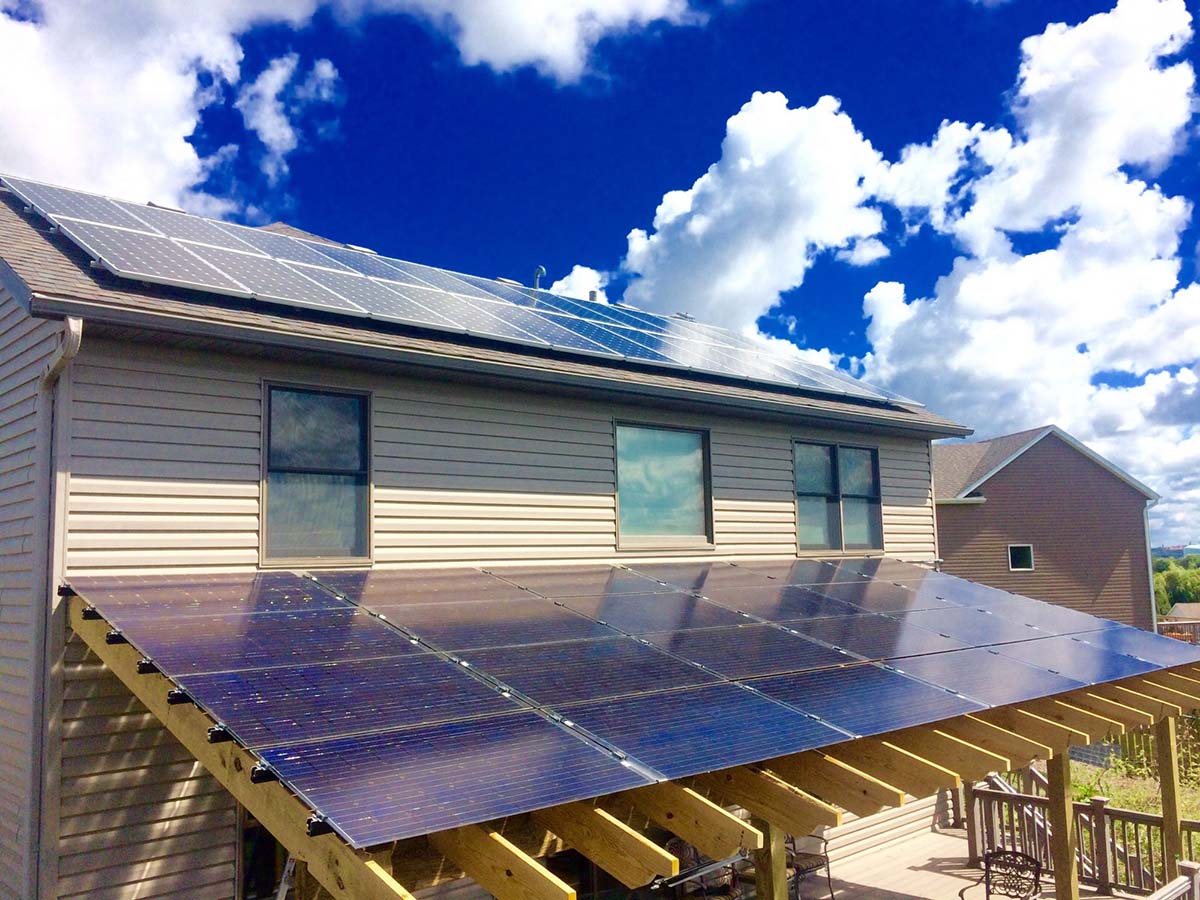
Residential Solar: Everything you need to know
A solar project is completed in America every 2 minutes, and most of those are residential solar arrays designed to meet a family’s year-round electrical needs.
What is a residential solar system?
Residential solar systems have six elements:
- Solar panels on the roof or a nearby ground-mount,
- The structure that holds the panels in place (and protects the roof, if mounted on the house itself),
- Wiring and conduit to protect the wiring,
- An inverter, which converts [direct current electricity from the sun into the alternating current electricity] our appliances use,
- DC optimizers which manage how the electricity travels between panels to get maximum efficiency
- And a web-based monitoring tool to track electricity production.
While some houses (probably less than 98%) use solar to get off the electrical grid, the majority of homes remain connected to their electric utility. This allows them to feed their extra solar energy into the system and pull energy out when their electrical needs are greater than their electrical production.
The solar industry comes of age
It seems like just yesterday, solar was a space-age technology for the super rich, but now solar is powering more than 3.32 million homes in California alone. How could an industry go from near obscurity to a serious player in such a short period of time?
- In 2005, Congress passed the Solar Investment Tax Credit, which allowed every purchaser of solar to recoup 30% of the cost in their taxes. This resulted in a sudden up-tick in solar purchases. Various state governments and utilities followed suite with their own financial incentive programs.
- Now that they had some capital to work with, solar manufacturers started investing heavily in streamlining their manufacturing processes. The price of solar equipment plummeted.
- With solar equipment now affordable, solar installers started finding ways of improving their own business practices, which resulted in another drop in costs.
The end result of these economic factors is that the cost of solar drop by 73% over 10 years. Solar was no longer just ecologically responsible, it also became a more responsible economic decision. At the same time, more and more homeowners have learned about the environmental impact of their lifestyles and looked for ways to lessen their carbon footprint and resource consumption.
The economics of residential solar
Wherever you live, whatever your work, we can all agree that the economy isn’t what it used to be. According to the US Bureau of Economic Analysis, 95% of Americans’ income goes toward necessities: taxes, housing, food, transportation, medicine, basic clothing, and more. That means that once our fundamental needs are met, we have only 5% of our hard-earned money to save for the future or spend on the things that make us happy. John Smith earning $80,000/year will have only $4,000 to split between retirement investments, emergency funds, college savings, home improvements, family vacations, hobbies, and the occasional nicety.
When $76,000 goes into your pocket and comes straight back out, eliminating the electric bill—around $1,000 a year—seems trivial…until you realize that $1,000 is a 25% increase in your discretionary income. For every four indulgences, you can now afford one more.
Like all real financial opportunities, the economic benefits of solar are long-term. Most systems can be paid for in ten years—interest and all—for just an extra $100 per month. Think of installing solar like putting money each month into an ultra-high-interest savings account. Since electricity costs rise about 3.7% per year, a family paying $1,000 per year in 2016 have paid more than $45,000 over 30 years for electricity that could have been generated by a $25,000 solar system. The family that installs solar instead will pay about $2,000 per year for ten years, then pay little or nothing at all for the following twenty years when electricity will be 1.4X to 2.8X more expensive. That adds up to about $26,000 in savings, even accounting for interest on the loan.
Until new technology can eliminate your mortgage or lower food costs, installing solar is one of the best ways to maximize your future discretionary income.

Residential solar and ecologically-conscious lifestyles
In 2012, the World Wildlife Federation published a report on global and country ecological footprints. The report measured human impact by the amount of land that would be necessary to renew the resources used each year, broken into six categories:
- How much land is covered in buildings and other structures
- How much land is used to raise crops
- How much land is used for grazing
- How much land (or, in this case, surface water) is used for fishing
- How much forested land is logged for wood and paper products
- How much forested land would be required to absorb carbon emissions
Measured this way, 68% of Americans’ ecological impact is from carbon emissions. According to a 2014 study by the Environmental Protection Agency, the single largest source of Americans’ carbon emissions is from electricity production. While some of this can be reduced by switching to LED lighting, unplugging unused appliances and other good practices, the only way to offset the impact entirely is by switching to a sustainable electricity source like solar.
All told, installing the average Minnesota home’s solar array has the same environmental impact as:
- Planting 4,400 trees
- Conserving 183,000 pounds of coal
- Biking instead of driving for 415,000 miles
- Or recycling 2.2 tons of waste
Advantages and Disadvantages of Solar
We’ve already covered in depth the two major benefits of solar power: major economic savings and a drastically reduced carbon footprint. Other benefits pertain to people who own electric cars (who wouldn’t want to do away with the electric bill AND the gas bill?) and tech-thusiasts who want to charge their iPhones using the same technology powering the International Space Station.
But since not everyone has solar, what are the holdups?
First and foremost, not every property is suitable for residential solar. It requires a southern-facing space with little to obstructions (which excludes many older neighborhoods with mature trees). For those who want to know if their home would be a candidate for solar power, Solar Connection will send a representative to your property for a site assessment at no charge. For those who can’t purchase their own systems, we encourage participation in community solar programs. Though the savings is not as great, it still has all of the ecological benefits of going solar.
Another disadvantage of solar panels is that they can’t produce electricity at night or when covered with snow (a serious consideration here in Minnesota), and production falls sharply when panels are shaded by clouds, trees or other obstructions. Amazingly, however, 44 states—including Minnesota—have eliminated this obstacle through “net metering” laws.
Here’s how it works: Since homes feeding solar power onto the grid during the day make it so electrical plants don’t have to work as hard, those homes are allowed to take that much energy back off the grid at night at little or no extra cost. That means the energy produced during the day pays for the energy you use at night, and the energy produced during the summer pays for the energy you use during the winter. Thanks to net metering, a family can produce enough electricity to meet their energy needs year-round, even in Minnesota.
The other major barrier to solar is the upfront cost. The residential solar business originally boomed thanks to “solar leases.” In essence, homeowners allowed companies to put company-owned panels onto their homes; in exchange, the homeowners use those panels’ electricity at a discount. Solar leasing allowed families to use clean energy at no upfront cost for less money than paying the utility.
But the economic savings of owning a system—even if it means financing—far outpace the benefits of leasing, so Solar Connection has established an exclusive financing partnership with Home Federal Bank of Rochester, allowing customers to pay the industry’s lowest interest rates.
What now?
If you want to know whether solar will fit your lifestyle, your property and your budget, the next step is to request to be contacted by a Solar Connection energy consultant. A site assessment will tell you how many solar panels you need to cover your lifestyle, how many you can fit onto your property, the overall cost, and the end savings. Site assessments cost nothing and require no commitments. (And lest you worry about being pressured into an unwise choice, we’re so nice not even our salespeople are pushy.)
